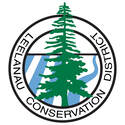District Readers: An Environmental Book Club
District Readers is a virtual book club fostering connections between educational readings and a community of nature-lovers.
Free and open to all, this program is an opportunity to get introduced to a diverse array of environmental disciplines through the power of storytelling. Selected titles include a blend of scientific research and narrative writing, painting a holistic picture of ways that our lives are intertwined with the natural world around us. District Readers meetings offer guided questions but are casual and free-flowing. This is a space to share your thoughts and spark conversations.
To sign up for a meeting, please visit our events page and click the registration button for the meeting you would like to attend. Each meeting will have its own Zoom link. If you would like to be added to an email list for information on all future District Readers meetings, please contact [email protected].
Special thanks to Leelanau, Grand Traverse, and Eaton Conservation Districts for helping to expand this program!
Free and open to all, this program is an opportunity to get introduced to a diverse array of environmental disciplines through the power of storytelling. Selected titles include a blend of scientific research and narrative writing, painting a holistic picture of ways that our lives are intertwined with the natural world around us. District Readers meetings offer guided questions but are casual and free-flowing. This is a space to share your thoughts and spark conversations.
To sign up for a meeting, please visit our events page and click the registration button for the meeting you would like to attend. Each meeting will have its own Zoom link. If you would like to be added to an email list for information on all future District Readers meetings, please contact [email protected].
Special thanks to Leelanau, Grand Traverse, and Eaton Conservation Districts for helping to expand this program!
|
Frequently Asked Questions
Q: Where can I get the books? A: We recommend checking with your local library. You may also consider joining MelCat: "MelCat is an online catalog service that allows patrons of participating libraries to borrow materials - books, movies, music, and more - from all over Michigan and have them delivered to their home library." Q: What if I don't finish the book in time? A: Please join anyway! Meetings start with discussion questions, but our talks are free-flowing, and the nature of these books inspire broader conversations about the world around us. Q: Are there any club fees? A: This is a free club! Q: How do I sign up? A: Please visit our events page, or email [email protected]. |
Previous titles for discussion:
Have another question? Contact [email protected] or call the Benzie Conservation District office for more information.
|


